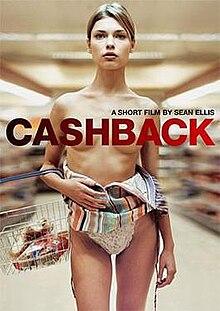
In the ever-evolving landscape of personal finance, where every swipe of a card or click of a button can yield tangible rewards, the age-old debate between cashback and loyalty points continues to captivate savvy consumers. Both options promise a form of monetary return, yet they cater to distinctly different financial philosophies. Cashback offers the immediate gratification of money back in your pocket, a straightforward benefit that appeals to those who value simplicity and instant rewards. On the other hand, loyalty points entice with the allure of exclusive perks, travel opportunities, and luxury experiences, rewarding patience and strategic accumulation. As you navigate this complex terrain, weighing the merits of each could be the key to unlocking the full potential of your spending habits. This article delves into the intricacies of both systems, helping you decide whether to prioritize the tangible clink of cashback or the aspirational promise of loyalty points in your financial journey.
Evaluating the Financial Impact of Cashback and Loyalty Points
In the realm of consumer rewards, the financial implications of cashback versus loyalty points can be significant, yet often misunderstood. Cashback offers a straightforward, tangible benefit: a percentage of your spending returned directly to your pocket. This immediacy can be appealing, especially when managing monthly budgets or saving for specific goals. Conversely, loyalty points often require accumulation before they translate into rewards, which may include discounts, free products, or exclusive services. The value proposition of points depends heavily on how you redeem them and the perceived value of the rewards offered by the program.
Consider these factors when weighing your options:
- Flexibility: Cashback provides instant value, while points often have restrictions on how and when they can be used.
- Value Consistency: Cashback amounts are fixed, whereas the value of points can fluctuate based on redemption options.
- Redemption Process: Cashback is straightforward, while points may require navigating complex reward systems.
- Expiry Concerns: Loyalty points may expire if not used within a certain timeframe, unlike cashback.
Ultimately, the choice between cashback and loyalty points depends on personal financial goals and spending habits. For those who appreciate immediate gratification and simplicity, cashback might be the preferable option. However, for individuals who enjoy strategizing to maximize value from accumulated points, loyalty programs could offer a rewarding experience.

Understanding Consumer Preferences in Reward Programs
In the realm of reward programs, consumer preferences often hinge on the tangible versus the aspirational. Cashback offers immediate gratification, translating directly into savings that can be reinvested or spent elsewhere. This appeals to consumers who prioritize practicality and immediate returns. On the other hand, loyalty points often build towards a future reward, providing an element of excitement and anticipation. They cater to those who enjoy the thrill of accumulating points for bigger payoffs such as travel, exclusive experiences, or high-value items.
- Cashback:
- Instant savings
- Flexibility in spending
- Easy to understand and redeem
- Loyalty Points:
- Build towards significant rewards
- Access to exclusive offers
- Incentive to stay loyal to a brand
Understanding these preferences can guide businesses in designing programs that resonate more deeply with their target audience, offering the right balance between instant rewards and aspirational incentives.

Strategic Approaches to Maximize Reward Benefits
In the world of credit card rewards, striking the right balance between maximizing cashback and accumulating loyalty points requires a strategic approach tailored to individual spending habits and lifestyle preferences. Cashback offers provide immediate, tangible returns that can be used to offset expenses or reinvest in future purchases. They are ideal for those who prefer straightforward rewards without the complexities of point conversion or redemption tiers. Loyalty points, on the other hand, often offer greater value when redeemed for travel or exclusive experiences, making them appealing to frequent travelers and brand enthusiasts.
- Analyze Spending Patterns: Review past spending to determine which categories yield the highest rewards and choose cards that align with these habits.
- Evaluate Reward Goals: Consider whether the ultimate goal is immediate financial relief through cashback or luxury experiences through points.
- Combine Strategies: Use a combination of cashback and points-earning cards to maximize benefits across different spending categories.
- Monitor Promotions: Stay informed about promotional offers that can temporarily boost rewards in either category.
Ultimately, the choice between cashback and loyalty points should align with personal financial goals and lifestyle, ensuring that every dollar spent brings the greatest possible return.
Expert Tips for Balancing Cashback and Loyalty Points
Striking the right balance between cashback and loyalty points can significantly enhance your financial strategy. Here are some expert tips to help you navigate these rewards:
- Analyze Your Spending Habits: Understand where you spend the most. If you frequently shop at a specific retailer, loyalty points might offer better value, whereas cashback could be more beneficial for general expenses.
- Evaluate Redemption Flexibility: Cashback provides straightforward returns, often credited directly to your account, whereas loyalty points may have restrictions or expiry dates. Consider how easily you can redeem these rewards.
- Combine Rewards Strategically: Use a mix of both rewards to maximize benefits. For instance, leverage loyalty points for travel or dining where they offer superior value, and use cashback for everyday purchases.
- Stay Informed: Keep up-to-date with any changes in reward structures or promotional offers. This awareness will help you make informed decisions and optimize your benefits.
Ultimately, the best strategy hinges on your personal financial goals and lifestyle preferences. Carefully consider the trade-offs to craft a rewards plan that aligns with your needs.



